Web Page: Order of Importance
Web Page: Chronological Patterns
Web Page: How to Write a Problem-Solution Essay
Web Page: Compare-Contrast, Cause-Effect, Problem-Solution
Web Page: Compare and Contrast Workout
Web Page: Classification
The way you organize information impacts how your audience receives it. The six informational structures on the next few pages will help you organize your information in a clear, easy-to-follow manner. Choose the pattern that best fits your project’s purpose.
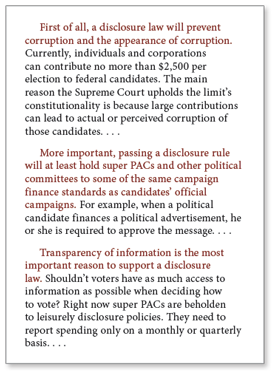
Use order of importance to rank details from least to most important, or from most to least important.
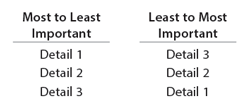
Note: Transitional words and phrases signal shifts in thought and are used to guide your audience through blocks of information.
Order-of-importance transitions: more important, most important, a more effective, most effective, good, better, best
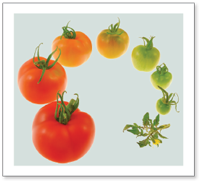
Use chronological order (time order) to arrange details in a story or process in the order in which they happened.
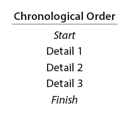
Chronological-order transitions: first, next, then, before, after, later, second, finally, last
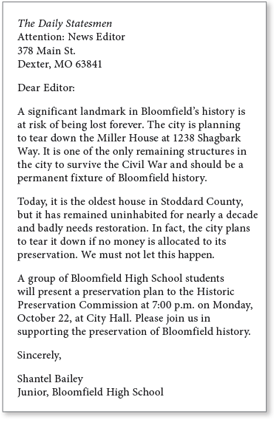
Use problem-solution order to explain a problem, outline a solution, or argue for or against a solution.
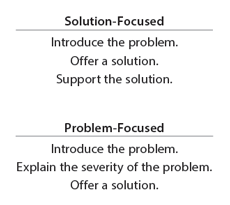
Problem-solution terms: at risk, a major problem, one symptom, should be saved, must not happen, to fix this, the best solution, please support
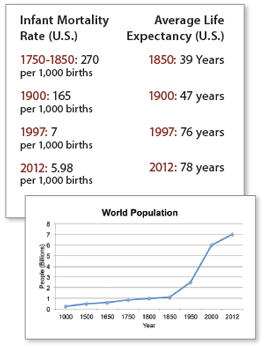
Use cause-effect organization to show the relationship between events or conditions. You may focus on one cause and its many effects, many causes and their one effect, or many causes and many effects.
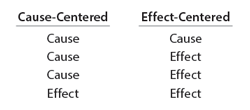
Cause-effect transitions: as a result, because, consequently, since, therefore, due to the fact that
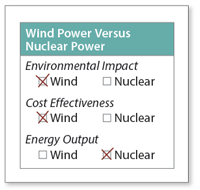
Use comparison-contrast organization to show the similarities and differences between two things.
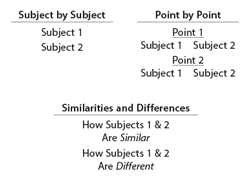
Comparison-contrast terms: also, both, but, by contrast, even though, like, likewise, however, similarly
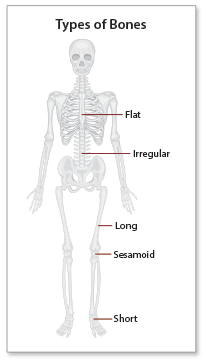
Use classification to break a subject into subgroups or categories. Then discuss the unique properties of each category.
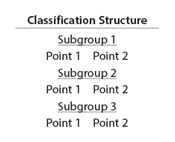
Classification terms: another kind of, the first subgroup, a second category, a third variety, a final type, the most popular, a less popular, a common type, a rare kind of
Your Turn Search a class text to find examples of the structures on pages 408–410.
Web Page: Order of Importance
Web Page: Chronological Patterns
Web Page: How to Write a Problem-Solution Essay
Web Page: Compare-Contrast, Cause-Effect, Problem-Solution
Web Page: Compare and Contrast Workout
Web Page: Classification
© 2014 Thoughtful Learning
